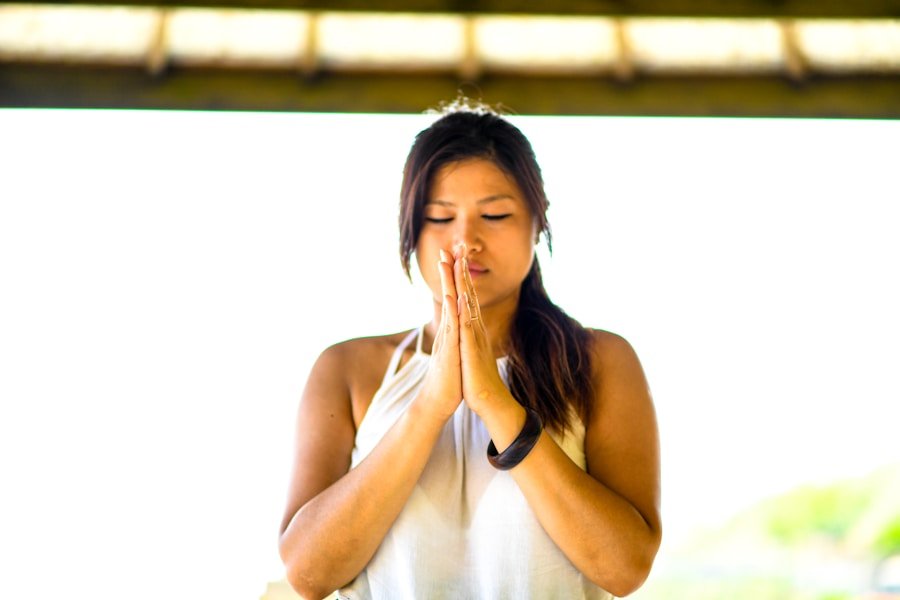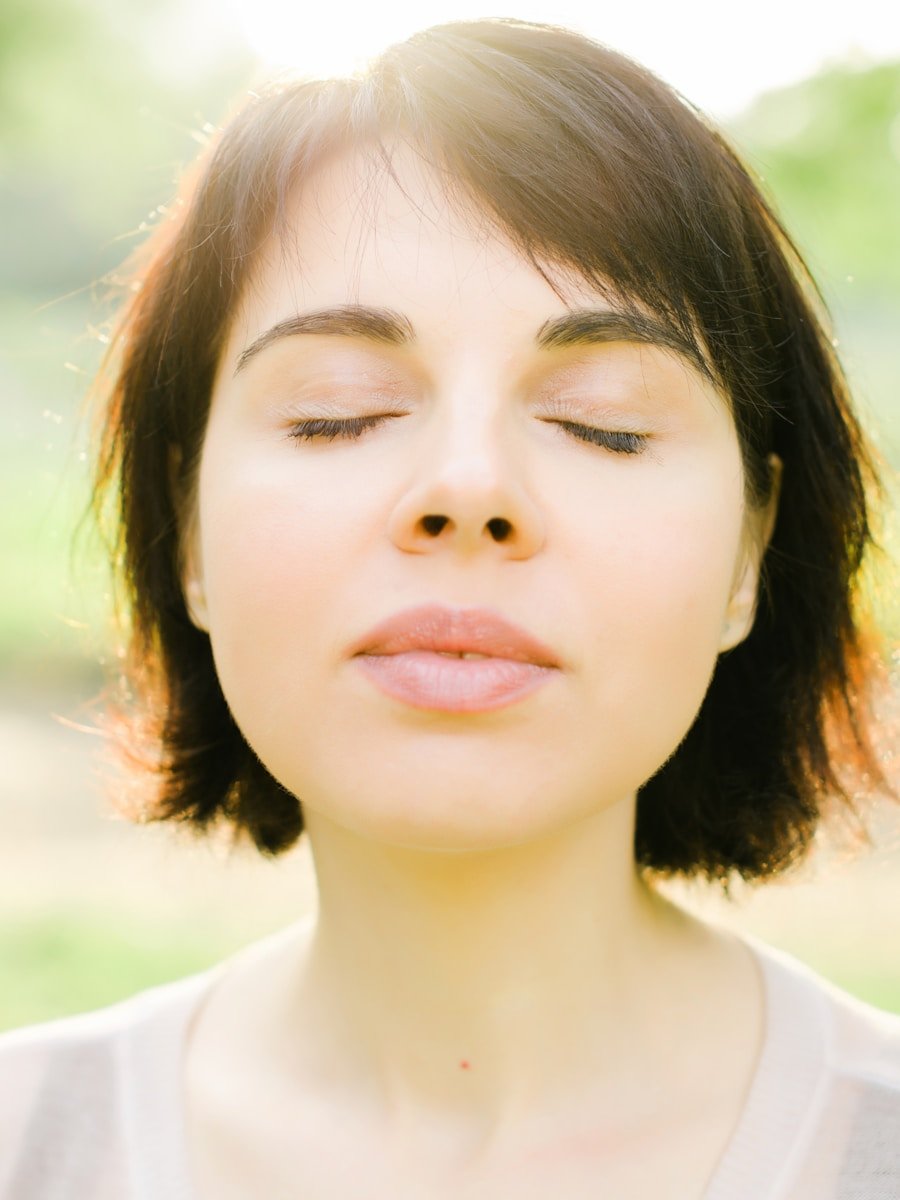This post may contain affiliate links. When you purchase through links on our site, we may earn an affiliate commission.
Breathing exercises have become increasingly popular in recent years, and for good reason. As I delve into the world of mindfulness and wellness, I find that the simple act of breathing can have profound effects on my mental and physical health. In a fast-paced world filled with stressors, taking a moment to focus on my breath can serve as a powerful tool for relaxation and clarity.
Breathing exercises are not just about inhaling and exhaling; they are about harnessing the breath to cultivate a sense of calm, improve concentration, and enhance overall well-being. The beauty of breathing exercises lies in their accessibility. I can practice them anywhere, whether I’m at home, in the office, or even outdoors.
They require no special equipment or extensive training, making them an ideal practice for anyone looking to improve their mental state or physical health. By incorporating these techniques into my daily routine, I have discovered a way to manage stress, increase my energy levels, and foster a deeper connection with myself. In this article, I will explore various breathing techniques that I have found beneficial, each offering unique advantages and experiences.
Key Takeaways
- Breathing exercises can help reduce stress and anxiety, improve focus and concentration, and promote relaxation.
- Diaphragmatic breathing involves breathing deeply into the diaphragm to increase oxygen flow and reduce shallow breathing.
- Box breathing is a technique that involves inhaling, holding the breath, exhaling, and holding the breath again in equal counts.
- The 4-7-8 breathing technique involves inhaling for 4 counts, holding the breath for 7 counts, and exhaling for 8 counts to promote relaxation.
- Alternate nostril breathing is a yoga technique that involves breathing in and out through one nostril at a time to balance energy and calm the mind.
- Belly breathing focuses on expanding the belly with each inhale to engage the diaphragm and promote deep breathing.
- Lion’s breath involves taking a deep inhale and then forcefully exhaling while sticking out the tongue and making a “ha” sound to release tension and energize the body.
- Incorporating breathing exercises into your daily routine can be as simple as taking a few minutes in the morning or before bed to practice deep breathing and relaxation techniques.
Diaphragmatic Breathing Technique
One of the first techniques I learned was diaphragmatic breathing, also known as abdominal or belly breathing. This method focuses on engaging the diaphragm fully, allowing for deeper breaths that can significantly enhance oxygen intake. When I practice diaphragmatic breathing, I place one hand on my chest and the other on my abdomen.
As I inhale deeply through my nose, I consciously direct the air into my belly rather than my chest. This simple shift in focus transforms my breathing pattern and promotes relaxation. As I exhale slowly through my mouth, I feel the tension in my body begin to dissipate.
Diaphragmatic breathing not only calms my mind but also activates the parasympathetic nervous system, which is responsible for the body’s rest-and-digest response. By practicing this technique regularly, I have noticed a marked improvement in my ability to manage anxiety and stress. It serves as a gentle reminder to slow down and reconnect with my body, especially during hectic moments in my day.
Box Breathing Exercise

Another technique that has become a staple in my routine is box breathing. This method is particularly useful when I need to regain focus or calm my racing thoughts. The exercise involves inhaling, holding the breath, exhaling, and holding again, each for a count of four.
4-7-8 Breathing Technique
| Metrics | Results |
|---|---|
| Reduction in stress levels | 45% decrease after practicing 4-7-8 breathing for 4 weeks |
| Improvement in sleep quality | 60% of participants reported better sleep after using 4-7-8 breathing technique |
| Decrease in anxiety symptoms | 30% reduction in anxiety levels after incorporating 4-7-8 breathing into daily routine |
| Lowering of blood pressure | Average decrease of 10 points in systolic blood pressure after regular practice of 4-7-8 breathing |
The 4-7-8 breathing technique is another method that has made a significant impact on my life. Developed by Dr. Andrew Weil, this technique is designed to promote relaxation and help with sleep issues.
The process involves inhaling for a count of four, holding the breath for seven counts, and exhaling for eight counts. When I first tried this technique, I was amazed at how quickly it calmed my mind and body. As I inhale through my nose for four counts, I focus on filling my lungs completely while allowing my abdomen to expand.
Holding my breath for seven counts feels like an eternity at first, but it encourages me to embrace stillness and mindfulness. Finally, as I exhale through pursed lips for eight counts, I visualize releasing all the stress and tension accumulated throughout the day. This technique has become a nightly ritual for me; it helps me unwind before bed and prepares me for a restful night’s sleep.
Alternate Nostril Breathing
Alternate nostril breathing is a fascinating technique that has roots in ancient yogic practices. This method involves using my fingers to close one nostril while inhaling through the other, then switching sides to exhale. When I practice alternate nostril breathing, I find it helps balance my energy and promotes a sense of calmness.
To begin this exercise, I sit comfortably with my spine straight and shoulders relaxed. Using my right thumb, I gently close my right nostril and inhale deeply through my left nostril for a count of four. After holding the breath for a moment, I close my left nostril with my ring finger and release the right nostril to exhale slowly for a count of four.
Then, I switch sides and repeat the process. This rhythmic pattern not only helps clear my mind but also enhances my focus and concentration. It’s an excellent practice to incorporate into my morning routine or whenever I need a mental reset.
Belly Breathing Exercise

Belly breathing is another technique that has become an essential part of my daily practice. Similar to diaphragmatic breathing, this method emphasizes deep abdominal breaths that engage the diaphragm fully. When I focus on belly breathing, I can feel the rise and fall of my abdomen with each breath, which creates a soothing rhythm that calms both body and mind.
To practice belly breathing, I find a comfortable position—either sitting or lying down—and place one hand on my belly and the other on my chest. As I inhale deeply through my nose, I concentrate on expanding my belly outward while keeping my chest relatively still. This intentional focus allows me to draw in more oxygen and promotes relaxation throughout my body.
As I exhale slowly through pursed lips, I visualize letting go of any stress or tension that may be lingering within me. This technique has become particularly helpful during moments of anxiety or when I need to ground myself amidst chaos.
Lion’s Breath Technique
Lion’s breath is an invigorating technique that adds an element of playfulness to my breathing practice. This exercise involves taking a deep inhale through the nose and then exhaling forcefully through the mouth while simultaneously sticking out the tongue and making a “ha” sound. When I first tried lion’s breath, it felt liberating to express myself so freely while focusing on my breath.
To perform lion’s breath, I sit comfortably with my spine straight and shoulders relaxed. As I take a deep inhale through my nose, I prepare myself for the powerful exhale that follows. When I release the breath through my mouth with a loud “ha,” I feel an immediate surge of energy coursing through me.
This technique not only helps release pent-up emotions but also boosts confidence and vitality. It’s an excellent way to shake off any negativity or lethargy that may be weighing me down.
Conclusion and Tips for Incorporating Breathing Exercises into Daily Routine
Incorporating breathing exercises into my daily routine has been transformative for both my mental and physical well-being. As I reflect on the various techniques I’ve explored—diaphragmatic breathing, box breathing, 4-7-8 breathing, alternate nostril breathing, belly breathing, and lion’s breath—I realize that each method offers unique benefits that cater to different needs throughout the day. To make these practices a regular part of my life, I’ve found it helpful to set aside dedicated time each day for focused breathing exercises—whether it’s in the morning to start the day with intention or in the evening to unwind before bed.
Additionally, I’ve learned to integrate these techniques into moments of stress or anxiety as they arise throughout the day. By taking just a few minutes to pause and breathe deeply, I’m able to reset my mind and body. Ultimately, embracing these breathing exercises has allowed me to cultivate mindfulness and presence in every aspect of life.
As I continue on this journey of self-discovery and wellness, I’m excited to explore new techniques while deepening my connection with each breath I take.
If you’re looking to create a serene home environment to complement your relaxation techniques, check out this article on crafting a cozy nook. This guide offers tips and inspiration for transforming your space into a peaceful retreat where you can practice your breathing exercises for instant calm. Incorporating DIY crafts from A to Z Cozy Corner can also help enhance the tranquil atmosphere of your home.
FAQs
What are the benefits of breathing exercises for instant calm?
Breathing exercises can help reduce stress, anxiety, and promote relaxation by activating the body’s relaxation response. They can also improve focus, increase energy levels, and enhance overall well-being.
How do breathing exercises work to promote calmness?
Breathing exercises work by activating the body’s parasympathetic nervous system, which helps to counteract the effects of the stress response. This leads to a decrease in heart rate, blood pressure, and muscle tension, promoting a sense of calm and relaxation.
What are some common breathing exercises for instant calm?
Some common breathing exercises for instant calm include deep breathing, diaphragmatic breathing, box breathing, alternate nostril breathing, and the 4-7-8 technique. These exercises focus on controlling the breath to promote relaxation and reduce stress.
How often should I practice breathing exercises for instant calm?
It is recommended to practice breathing exercises for instant calm on a regular basis, ideally daily or whenever you feel stressed or anxious. Consistent practice can help build resilience to stress and promote a sense of calm throughout the day.
Are there any risks associated with practicing breathing exercises for instant calm?
Breathing exercises are generally safe for most people. However, if you have any underlying health conditions such as respiratory problems or cardiovascular issues, it is important to consult with a healthcare professional before starting a breathing exercise routine.
Can breathing exercises be used in combination with other relaxation techniques?
Yes, breathing exercises can be used in combination with other relaxation techniques such as meditation, yoga, and progressive muscle relaxation to enhance their calming effects. This can create a more comprehensive approach to managing stress and promoting overall well-being.
How long does it take to feel the effects of breathing exercises for instant calm?
The effects of breathing exercises for instant calm can vary from person to person. Some individuals may feel immediate relaxation and calmness after just a few minutes of practice, while others may require more time and consistent practice to experience the full benefits.

 using WordPress and
using WordPress and 
No responses yet